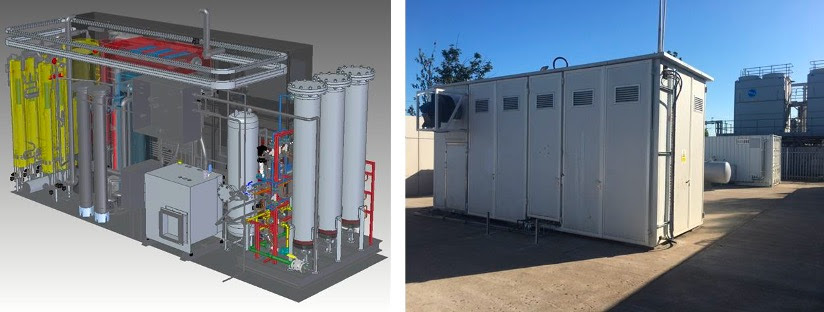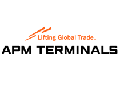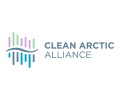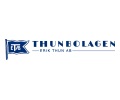New LNG production and marine bunkering capability at Port Hedland, Western Australia, with a pathway to IMO 2050 ‘zero-emissions’ through onboard hydrogen production

Pilbara Clean Fuels Pty Ltd is progressing a development concept for a new, mid-scale, low carbon footprint LNG plant to be located at Port Hedland in Western Australia, the world’s largest iron ore export port.
The project will provide an Australian LNG fuel supply capability through a new facility for the conversion of pipeline natural gas to LNG, responding to market demand for cleaner marine bunker fuel for dry-bulk iron ore carriers operating ‘round-trip’ voyages between the Pilbara and Asia.
Market studies show increasing worldwide adoption of LNG as a marine fuel, with supply availability one of the key drivers. The base-case plant capacity is 0.5 Mtpa, with market analysis for Port Hedland alone (not counting other major Pilbara ports) indicating potential demand of 1.0 Mtpa by 2030.

Port Hedland Iron Ore Export Facilities
A key feature of the project is an electrified plant with outsourced power supplied predominantly from renewable sources. The design intent is to significantly reduce Scope 1 and Scope 2 emissions compared to conventional LNG plants. Thereby providing an ability for round-trip voyages bunkering in Port Hedland to achieve substantially lower overall GHG life-cycle emissions than other options.
The LNG re-fuelling concept is based on ship-to-ship bunkering of vessels while at anchor off Port Hedland.
Oceania Marine Energy Pty Ltd is developing a LNG marine fuel bunkering service capability based on the charter, ship management and operation of purpose-designed LNG bunker vessels. The vessels are to be provided by Norwegian ship-owner Kanfer Shipping.
RINA is developing a concept for a new 209,000 DWT ‘Newcastlemax’ dry-bulk ship design with an innovative LNG marine fuel system involving pre-combustion carbon removal and hydrogen production, with the objective of meeting and exceeding IMO 2050 emissions reduction marine vessel Carbon Intensity Index (‘CII’) objectives.
The RINA fuel system concept involves the capture, onboard storage and offloading of liquefied carbon dioxide or solid carbon at loading or discharge ports for onshore handling, monetisation or disposal. The concept provides a credible line-of-sight pathway to ‘zero emissions’ for the application of LNG as a marine fuel.
By solving the historic criticism of LNG as being only a ‘transition fuel’, rather than having a long-term future as a ‘zero emissions’ fuel, this solution is likely to be welcomed by the marine engineering community due to the extensive maritime operational experience of LNG and its known safe handling characteristics.

Typical onshore Hydrogen Production Module indicating the type of equipment to be adapted for onboard application.
The Pilbara to Asia dry-bulk trade route is particularly suited for early adoption of the pre-combustion carbon removal and hydrogen production onboard concept due to proposed availability of low carbon intensity LNG bunkering at Port Hedland, along with an ability for offloading carbon dioxide or solid carbon and a variety of monetisation or disposal options.
Recognising the complementary aspects of their respective project interests and business objectives, PCF, Oceania and RINA have entered into a Memorandum of Understanding (“MoU”). Under the terms of the MoU, PCF, Oceania and RINA have agreed to collaborate to develop an ‘end-to-end’ low-carbon profile LNG production and marine vessel bunkering capability concept for the port of Port Hedland. Furthermore, RINA’s 209,000 DWT Newcastlemax dry-bulk vessel design and fuel system design concept provides a path to ‘zero emissions’ for the adoption of LNG as a marine fuel on a 2050 timeframe.
PCF Managing Director, Robert Malabar commented “Along with our existing partners Oceania, we are delighted to have formed the new collaborative relationship with RINA. The partnership has the ability to demonstrate an attractive commercial development strategy to meet not only the immediate needs of IMO 2030 emissions compliance, but the engineering step-change needed to create a practical path to IMO 2050 net-zero emissions objectives. We know the maritime community is happy with LNG as a marine fuel. We believe the outcome of the studies should provide compelling argument in support of the Western Australian Government’s May 2020 announcement to “Create an International LNG Fuelling Hub in the Pilbara.”

Iron ore vessels at Port Hedland anchorage LNG bunkering vessel proposed by Oceania Marine Energy
Oceania Managing Director, Nick Bentley commented “Oceania, PCF, and now collaboration with RINA, heralds the beginning of a new decarbonisation initiative in Western Australia, enabling a much-needed lower-carbon fuel source for shipping. The Oceania and PCF collaboration is aimed at providing a supply capability for low-carbon footprint LNG, for the first time available on-route to the Australia – Asia iron ore shipping fleets. RINA adds to that with new ship and fuel system design enabling LNG to be viewed as a potential future zero-emissions marine fuel.
“Together we are excited to participate in developing Australia’s primary green corridor for shipping, supporting significant emission reductions in the short term, and in the future, for a maritime trade route critically important to Western Australia’s economy.”
RINA Marine Consulting Executive Vice President, Massimo Volta commented “The combined knowledge and expertise of PCF, Oceania and RINA will allow a comprehensive approach to the project, rather than to the single phases, that will actually maximise the emissions reduction effort. The shipping industry is living a time of uncertainty that still requires immediate investments. Port Hedland is the world’s biggest iron ore export point and providing such system with a solution that allows a more flexible transition while achieving IMO 2050 targets with an existing fuel will be a massive contribution to the path to West Australia green corridor.”
Source: RINA

 Hellenic Shipping News Worldwide Hellenic Shipping News Worldwide, Online Daily Newspaper on Hellenic and International Shipping
Hellenic Shipping News Worldwide Hellenic Shipping News Worldwide, Online Daily Newspaper on Hellenic and International Shipping





















 PG-Software
PG-Software